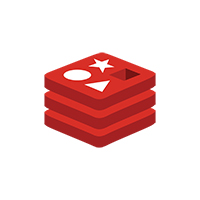
What are use cases for Redis?
1. Caching
2. Session management
3. Real time analytics
4. Message queue
import redis
import psycopg2
# Connect to Redis
redis_client = redis.StrictRedis(host='localhost', port=6379, db=0)
# Function to fetch data from the database
def fetch_data_from_db(user_id):
# Database connection (assuming PostgreSQL)
conn = psycopg2.connect("dbname=mydb user=myuser password=mypassword")
cursor = conn.cursor()
# Execute the query
cursor.execute(f"SELECT * FROM user_data WHERE user_id = {user_id}")
data = cursor.fetchall()
# Close the connection
conn.close()
return data
# Function to get user data with caching
def get_user_data(user_id):
key = f"user:{user_id}"
# Check if data is in the cache
cached_data = redis_client.get(key)
if cached_data:
return cached_data.decode('utf-8')
# Fetch data from the database
data = fetch_data_from_db(user_id)
# Store data in the cache for future use (expire in 1 hour)
redis_client.setex(key, 3600, str(data))
return data
Memcached, which is another popular caching solution, could be used for similar scenarios.
import redis
# Connect to Redis
redis_client = redis.StrictRedis(host='localhost', port=6379, db=0)
# Function to log user activity
def log_user_activity(user_id, action):
key = "user_activity"
# Add current timestamp to the sorted set
redis_client.zadd(key, {f"{user_id}_{action}": time.time()})
# Example usage
log_user_activity(123, "login")
log_user_activity(456, "purchase")
Elasticsearch or InfluxDB could be considered for more complex analytics needs.
import redis
from flask import Flask, session
# Initialize Flask app
app = Flask(__name__)
app.secret_key = "your_secret_key"
# Configure Flask to use Redis for session storage
app.config['SESSION_TYPE'] = 'redis'
app.config['SESSION_PERMANENT'] = False
app.config['SESSION_USE_SIGNER'] = True
app.config['SESSION_KEY_PREFIX'] = 'your_prefix:'
app.config['SESSION_REDIS'] = redis.StrictRedis(host='localhost', port=6379, db=1)
# Example: Setting and accessing a session variable
with app.test_request_context('/'):
session['user_id'] = 123
print(session['user_id'])
MongoDB, with its JSON-like document storage, can also be used for scalable session storage.
import redis
import threading
# Connect to Redis
redis_client = redis.StrictRedis(host='localhost', port=6379, db=0)
# Subscribe to a channel
def subscribe_channel(channel):
pubsub = redis_client.pubsub()
pubsub.subscribe(channel)
for message in pubsub.listen():
print(f"Received message: {message['data']}")
# Publish to a channel
def publish_message(channel, message):
redis_client.publish(channel, message)
# Example usage in two separate threads
threading.Thread(target=subscribe_channel, args=('chat',)).start()
threading.Thread(target=publish_message, args=('chat', 'Hello, Redis!')).start()
Apache Kafka or RabbitMQ are alternatives for building scalable message-oriented architectures.
import redis
# Connect to Redis
redis_client = redis.StrictRedis(host='localhost', port=6379, db=0)
# Function to update user scores
def update_leaderboard(user_id, score):
key = "game_leaderboard"
# Add or update user score in the sorted set
redis_client.zadd(key, {user_id: score})
# Function to get the leaderboard
def get_leaderboard():
key = "game_leaderboard"
# Get the leaderboard in descending order (highest score first)
leaderboard = redis_client.zrevrange(key, 0, -1, withscores=True)
return leaderboard
# Example usage
update_leaderboard("user1", 1500)
update_leaderboard("user2", 1200)
print(get_leaderboard())
MongoDB with its aggregation framework can be used for more complex leaderboard scenarios.
Redis, with its exceptional performance and support for various data structures, proves to be a versatile solution for a wide range of use cases. Through the examples provided in this blog post, we've highlighted how Redis can be leveraged in scenarios such as caching, real-time analytics, session storage, Pub/Sub messaging, and leaderboards. While Redis excels in these areas, it's essential for developers to weigh alternative tools based on specific project requirements and scalability needs. Whether opting for Memcached, Elasticsearch, InfluxDB, MongoDB, Apache Kafka, RabbitMQ, or others, the key is to choose a tool that aligns seamlessly with the goals and demands of the application at hand.